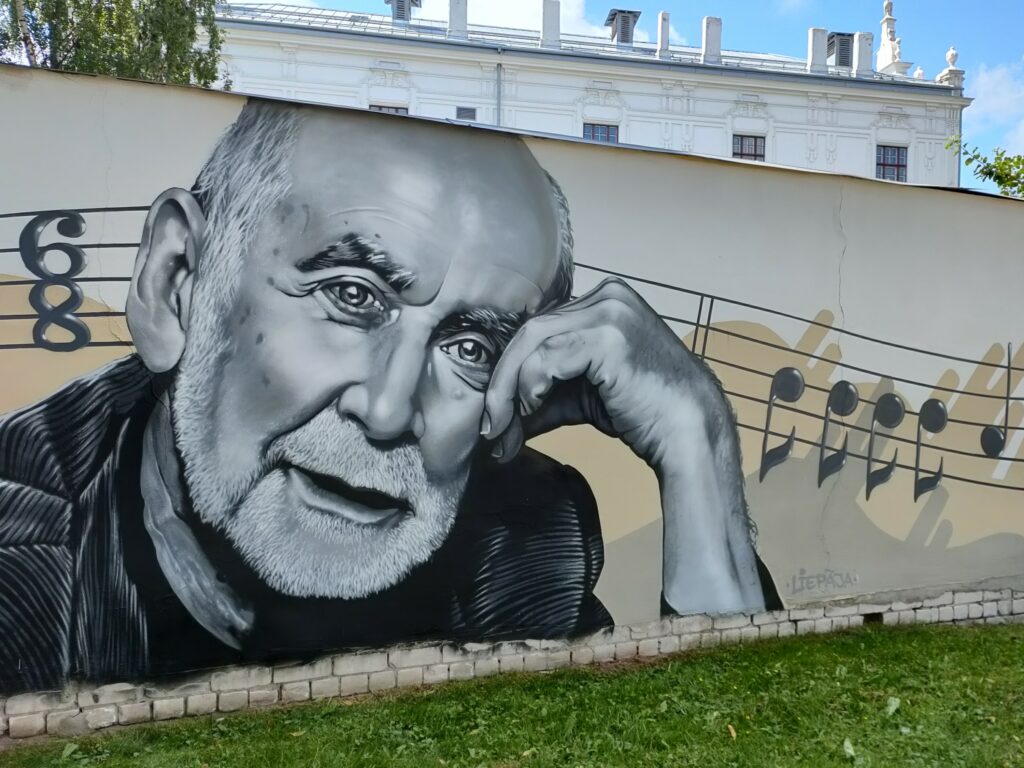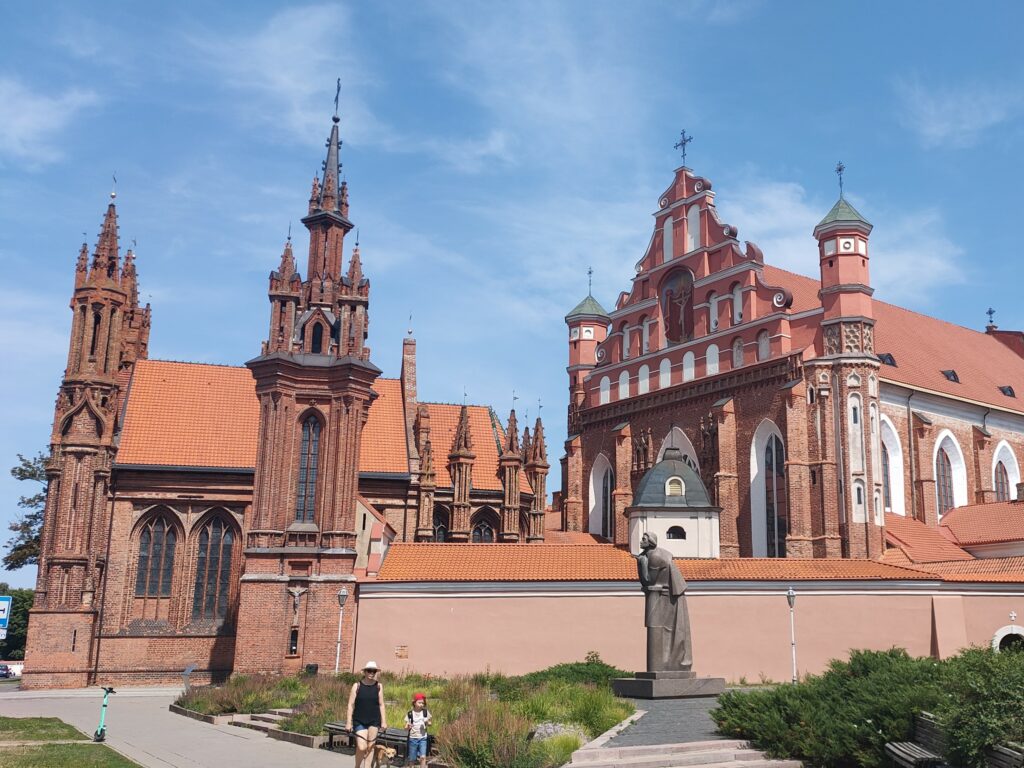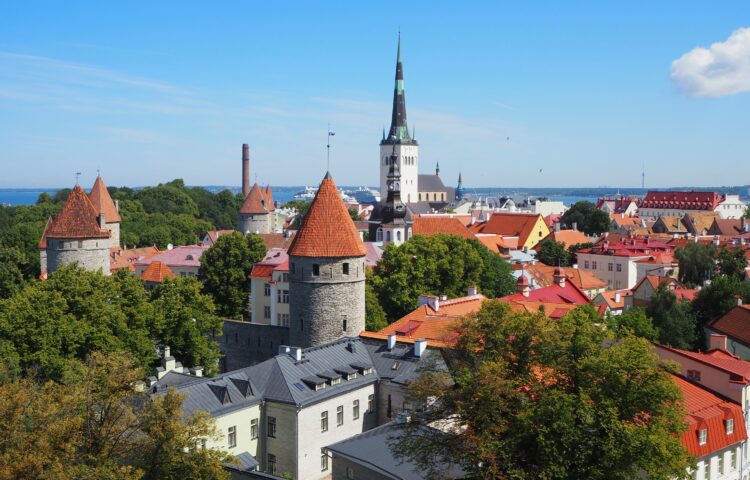Estonia, Latvia and Lithuania are three small and exotic countries in the south of the Baltic sea. Their size, variety of attractions and contrast with nearby western European countries make a Baltic countries roadtrip a perfect choice for a wide range of travelers.
The Baltic states offer some of the capitals with the longest history in Europe, which, combined with the many empires that ruled on the area (German, Sweddish, Polish, Russian…) make for very large and varied old towns in which you can find different architectonic styles and religions. The cities are modern metropolis, in contrast with the countryside where you can still experience the traditional lifestyle. Additionally, more National Parks that you can visit will marvel you with their eternal and mystic pine forests or white sand beaches.

In this post, you will find a brief explanation on what you will encounter on the Baltics and different ways to organise your Baltic countries roadtrip, according to your preferences and the days you have available. There is also information on how to move around, both at the cities and the countryside and a detailed list of the main attractions to visit. And last, for inspiration you can find the itinerary we followed and our expenses.
Also, if you want more specific details about each country and the activities to do there, check my other following posts:
Contents
The basic utilities
The Baltic states are part of the European Union and as such really easy to travel from Europe. Besides the countries in Europe, there is a fairly comprehensive list of third-countries whose citizens can enter visa-free (you can check more detailed information here: https://www.schengenvisainfo.com/). For European citizens, their driving license is valid and they can request an European Health Insurance Card.
Any European Union SIM card will be valid without additional cost in Estonia, Latvia and Lithuania, and even the rest of the Baltic countries if you decide to extend your trip.

They are located quite up north, which means that in winter they get very few hours of light and in summer (when we visited) you can expect the sun to rise at 3-4am and to set at 10-11pm. As extreme as this sounds, it means that depending on when you travel you should plan your activities accordingly. Be prepared for outdoor attractions when there is light available, and indoor visits when it’s dark.
It is also important to mention the climate: winters are as cold as -30ºC and summers are mild (at least, in comparison with other sourthern destinations). Highest temperatures usually reach 25 or 30ºC. Otherwise, the climate is quite unpredictable and you can expect rain on any given day.
There are several ways to organise your Baltic countries roadtrip. For example, you could focus on the capitals (all three of them Tallinn, Riga and Vilnius are UNESCO’s World Heritage Sites) and be done in less than a week. Or alternatively you could prefer to extend your stay to include also National Parks and the countryside. In the former, you could only use public transport, but in the later you would need to rent a car to move around.

Moving around
Public transport and cities
The three countries are very well connected by the network of public transport, with options that range from train, buses or ferries. We found the bus to be the most comfortable way to move around, as they connected the main cities directly while with trains you needed to transfer in the borders.
However, it was not that easy to visit the countryside by public transport, also considering that when you explore a National Park there are usually several spots worth visiting and you definitely need a car for that. If you don’t feel that you will need it for the whole trip, you can rent it for a day.
It is also worth mentioning that Tallinn is very well connected with Helsinki by ferry. So very well connected that some Helsinki locals travel to Tallinn to buy cheaper alcohol. And this also would allow you to include a visit to Finland’s capital in your Baltic countries roadtrip.

To move around the cities, besides walking we found that the best way for us was to use the app Bolt for the taxi service. It is generally unexpensive and there are always plenty of cars available. However, there is also a very decent network of public buses and trolleys and you can generally buy the tickets with your phone.
Renting a car
If you want to enjoy more liberty or wander around the countryside and National Parks, you will need a car. Depending on the amount of visits outside the city that you want to include in your Baltic countries roadtrip, you can choose to rent a car for the specific day you will need it, or to have it for several days.

Regardless of how long you have the car for, you can move around the three baltic countries without additional charge (Estonia, Latvia and Lithuania). The roads are generally very good although narrow. Particularly for those of us who are accustomed to several lanes per direction, as most roads there (even the ones connecting the main cities) only have one lane. In some National Parks you might find that the road is unpaved. But it is very well maintained and accessible with any type of car.
In the cities but also in towns and some natural destinations, you will need to pay for the parking. This is generally indicated with traffic signs. You have several options to pay: mobile apps or coins (but not banknotes), and no credit card. The two apps that we used accross the countries were UniPark and EuroPark. In both of them you register your license plate and you indicate when your parking starts and stops.
Now, if you plan to rent a car just for one day this will interest you. You can do so through the app Bolt, which offers decent prices that include insurance. We analysed the prices and roughly, we found that up to 350km for the day, a renting through Bolt would be cheaper than a conventional dealer.

Our itinerary for the Baltic countries roadtrip
We knew that in our two-weeks Baltic countries roadtrip we wanted to visit Estonia, Latvia and Lithuania. We wanted to explore the countryside and nature of these countries, not only their capitals. For us, the trip started in Helsinki (Finland), then we moved to Tallinn (Estonia) and explored the rest of Estonia. We went to Riga (Latvia) and after visiting the capital, we rented a car and did a round trip through Latvia and Lithuania, ending again in Riga. From there we took our flight home.
The main reason why we did it that way was because of flight tickets costs: it was absurdly cheap to return from Riga, and absurdly expensive to arrive to anywhere. Helsinki was the least expensive option and it is connected to Tallinn by a two-hours ferry, so we decided to include also the capital of Finland in this trip although we had not originally planned to do so.

Also, as we were trying to keep our expenses controled we opted for a combination of public transport to move around and renting a car to be able to leave the cities. Roughly, for the first week of our trip we moved by bus and on the second we had the car.
It was not a trip to relax but rather packed with activities and quite intense (just how we liked it!). However, for these reason there are a lot of attractions that we couldn’t visit. As always, you have to prioritise! We were lucky to visit in summer to have plenty of hours of light.
This trip was our delayed honeymoon and I also was pregnant with our son, so you can imagine how special it was!

Day-by-day account
Finland
DAY 1: arrival to Helsinki. We arrived to Helsinki at 5pm and as I was sick I did not leave the hotel room. Yeah, the best way to start!

DAY 2: visiting Helsinki, leaving to Tallinn. I felt better but could not eat, so it was a very relaxed day. We visited the main spots in the city and at 9pm we took the ferry to Tallinn, arriving at 11.30pm.

Estonia
DAY 3: visiting Tallinn. We started the day with a free tour and then wandered through Old Town and Telliskivi neighbourhood.

DAY 4: visiting Tallinn, leaving to Tartu. It was again dedicated to Tallinn Old Town and to Kadriog Gardens. At 5pm we took the bus to Tartu, arriving at 7.30pm.

DAY 5: Soomaa National Park. We rented a car for a day to visit Soomaa, where we did canoeing through the river and a trekking at the mires, with a landscape that is difficult to find anywhere else. Then, as we had the car we spent the night with a local family in the countryside near Tartu.

DAY 6: visiting Tartu, leaving to Riga. The main activity was, again, a free tour and then we wandered on our own around Tartu, the university city of Estonia. At 6pm we left by bus to Riga, arriving at 10pm. It was honestly quite long and tiring.

Latvia
DAY 7: visiting Riga. By now you can guess that we really appreciate free walking tours, so that’s how we started our day to visit in the afternoon other places of Riga. As our last day of the trip was also dedicated to Riga, on day 7 we focused on the old town.

DAY 8: Gauja National Park, Cēsis Castle, leaving to Vilnius. We rented a car and started the roadtrip through Latvia and Lithuania. We visited Gauja National Park by exploring its main attractions: the two castles of Sigulda, we skipped the cave of Gutmanis at Krimulda and explored the Turaida Castle. Then, we moved to Cēsis Castle, which was amazing as we had a lantern to visit the dark passages on our own. Then we drove a very long and exhausting 5 hours to Vilnius.

Lithuania
DAY 9: visiting Vilnius. We did a free walking tour that showed us around the old town and the Independent Republic of Uzupis. Then, again, we explored the main attractions by ourselves.

DAY 10: Trakai Castle, leaving to Klaipėda. This amazing castle in the middle of a lake is located at 30 minutes from Vilnius and is one of the main attractions of Lithuania. We explored it under the rain, and skipped the boats to navigate around it. After that we drove to Klaipėda.

DAY 11: Curonian Spit. We took the ferry from Klaipėda to Curonian Spit, an amazingly varied island that is shared between Lithuania and Russia (Kaliningrad). You can prepare your wallet as you need to pay to access to almost everywhere.

Latvia
DAY 12: Liepāja, Kuldiga and Venta rapid. Liepāja is the third city of Latvia, although still not very touristic. However, we spent the day chasing the main attractions that were marked with musical notes in the street, which was a cutest activity than we had anticipated. In the afternoon we visited the small town of Kuldiga, very popular among locals. It has the widest waterfall of all Europe: Venta rapid.

DAY 13: Slītere National Park. Slītere, with its dunes, churches, cliffs and forests is one of the main locations of the Livonian culture in the Baltic countries. We visited several spots that included the tomb of the only officially recognised werewolf of Latvia.

DAY 14: Riga, returning home. As we had already visited Riga’s old town, on our last day of the Baltic countries roadtrip we explored the market and Moscow Disctrict. In the afternoon we left to the airport and home.

Main attractions and activities
We had compiled a very extensive list of potential visits for our Baltic countries roadtrip, which in the end got reduced because we had only two weeks to visit three countries.
In this table I have compiled all the tourist attractions that are detailed below. Here you will find the complete list along with some additional information:
- Type of attraction: city (mainly de capitals but also some charming and small cities), nature (great national parks as well as islands), castle (which also includes fortresses), and a few spots that are difficult to classify.
- Rating: from 1 to 5, 5 being the highest. Now keep in mind that this is very subjective and that I tend to prefer nature over cities. Also, know that this rating serves to compare one attraction to another in this list, so a low rating doesn’t mean we didn’t like it, but that we didn’t like it as much as other places we went to. Again, if the column is empty it means that we didn’t visit.
| NAME | COUNTRY | TYPE | RATING |
|---|---|---|---|
| Tallinn | Estonia | City | ★★★★★ |
| Tartu | Estonia | City | ★★★☆☆ |
| Soomaa National Park | Estonia | Nature | ★★★★★ |
| Jägala waterfall | Estonia | Nature | – |
| Rummu Quarry | Estonia | Old prison (now park) | – |
| Saaremaa | Estonia | Nature | – |
| Lahemaa National Park | Estonia | Nature | – |
| Riga | Latvia | City | ★★★★☆ |
| Sigulda, Krimulda and Turaida | Latvia | Castle | ★★★☆☆ |
| Cēsis Castle | Latvia | Castle | ★★★★★ |
| Liepāja | Latvia | City | ★★★★☆ |
| Kuldiga | Latvia | City | ★★★★☆ |
| Venta Rapid | Latvia | Nature | ★★☆☆☆ |
| Slītere National Park | Latvia | Nature | ★★★★☆ |
| Vilnius | Lithuania | City | ★★★☆☆ |
| Trakai Castle | Lithuania | Castle | ★★★★☆ |
| Curonian Spit | Lithuania | Nature | ★★★☆☆ |
| Klaipėda | Lithuania | City | – |
| Kaunas | Lithuania | City | – |
| Hill of Crosses | Lithuania | Nature | – |
| Grūto parkas | Lithuania | Soviet sculptures exposition | – |
| Helsinki | Finland | City | ★★★☆☆ |
Our expenses in the Baltic countries roadtrip
In the table below you can find a compilation of the overall expenses we had in our trip. We have excluded the flight costs because they are very variable. Also keep in mind that it was our honeymoon and while we were definitely not wasting money, we also wanted to enjoy ourselves 🙂
| CONCEPT | TOTAL COST (14 days) | COST PER DAY PER PERSON |
|---|---|---|
| Rental car | 573.87€ | 40.99€ (for 7 days) |
| Other transport | 173.50€ | 12.39€ (for 7 days) |
| Accomodation | 737.63€ | 26.34€ |
| Food | 784.78€ | 28.03€ |
| Tourist attractions | 281.00€ | 10.04€ |
| Other | 62.90€ | 2.25€ |
| TOTAL | 2,613.68€ | 93.35€ |
Some comments:
- We were a party of two, so total costs include the expenses for both of us, while the last column refers to the cost per day per person.
- The concept “rental car” also includes gas and parking. We had a car rented for a total of 7 days.
- “Other transport” refers mainly to the buses to travel from one city to the next and taxi drives for the 7 days that we did not have the car.
- “Other” includes mainly souvenirs and bathroom stops.

Was this post on the Baltic countries roadtrip useful for you? Please let me know and feel free to ask any question in the comments section! You can also support my work and Buy Me A Coffe. I will be immensely happy 🙂
